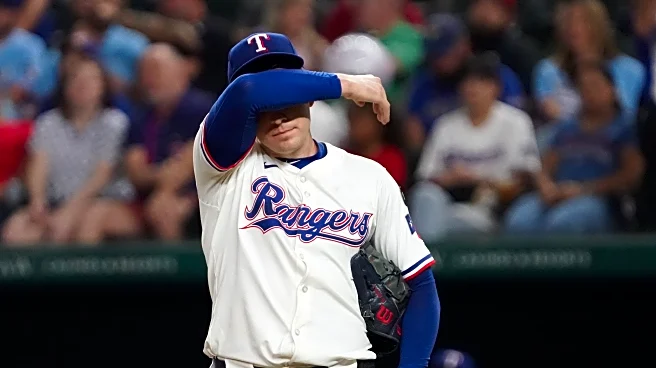What's Happening?
Wyatt Langford, a player for the Texas Rangers, has been placed on the 10-day injured list due to a left oblique strain. This decision follows Langford's early exit from a game on Tuesday after aggravating an existing injury on his left side, which has been troubling him for the past week. As a result, the Rangers have decided to shut him down for the remainder of the season. Langford's sophomore MLB season concludes with a .241/.344/.431 slash line, 22 home runs, 62 RBIs, 73 runs scored, and 22 stolen bases over 134 games. To fill the gap in the outfield, Billy McKinney has been selected from Triple-A Round Rock.
Why It's Important?
Langford's absence is a significant loss for the Texas Rangers as they approach the end of the season. His contributions have been vital to the team's performance, and his statistics reflect a promising career trajectory. The decision to end his season early is likely aimed at ensuring his full recovery and preventing further injury. This move also opens up opportunities for other players, such as Billy McKinney, to step up and fill the void left by Langford. The team's management will need to strategize effectively to maintain their competitive edge without one of their key players.
What's Next?
With Langford sidelined, the Texas Rangers will need to adjust their lineup and strategies for the remaining games of the season. Billy McKinney's selection from Triple-A Round Rock indicates a shift in the team's approach to managing their outfield. The Rangers will likely focus on optimizing their current roster to compensate for Langford's absence. Additionally, Langford's recovery process will be closely monitored to ensure he returns to the field in optimal condition for the next season.
Beyond the Headlines
Langford's injury highlights the physical demands and risks associated with professional sports. It underscores the importance of player health management and the need for teams to have robust support systems in place. The decision to end his season early reflects a proactive approach to athlete welfare, prioritizing long-term health over short-term gains. This situation may prompt discussions within the sports community about injury prevention and management strategies.













